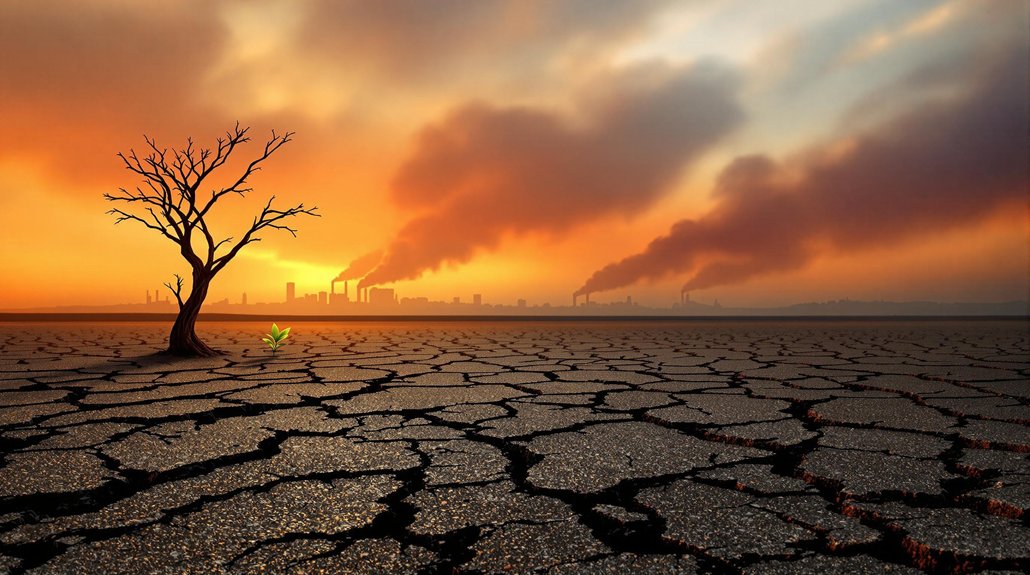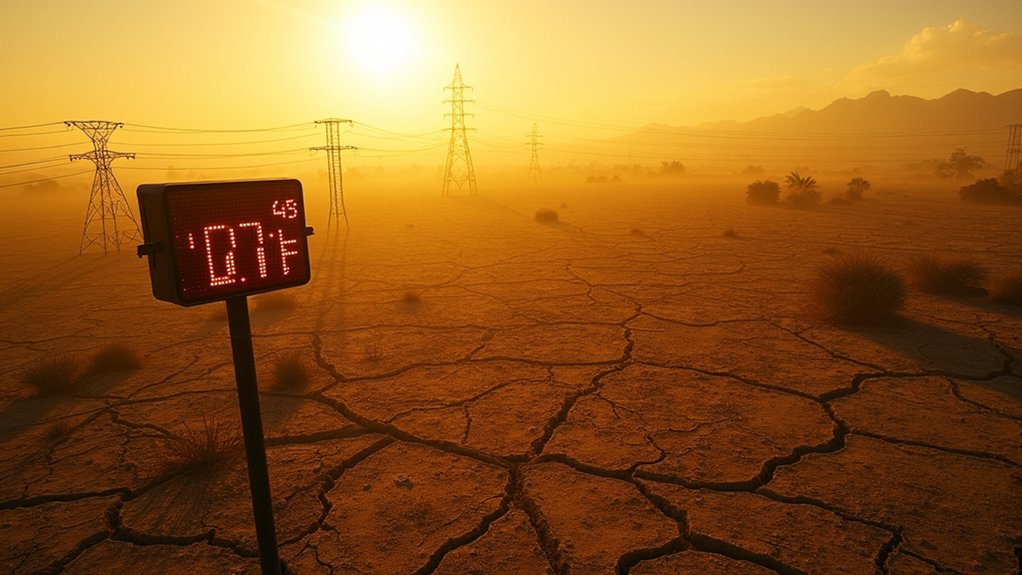Humans are hitting their heat limits. Global temperatures keep breaking records, with heatwaves killing more people each year. Breathing’s becoming a luxury with 6.7 million dying annually from air pollution. Cities are worse, turning into urban heat islands. The elderly and poor suffer most as regions become uninhabitable, creating climate refugees. Meanwhile, wildfires rage larger than ever. Our economic systems? They’re melting down too. The future looks uncomfortably warm.
As temperatures soar to unprecedented levels worldwide, humanity finds itself scrambling to adapt to a reality that once seemed like distant scientific warnings. The data doesn’t lie. Heatwaves are hitting harder, lasting longer, and killing more people. Not exactly the climate progress we were hoping for.
Those 6.7 million premature deaths from air pollution annually? That’s more than the entire population of Denmark. Gone. Every year. And 3.6 million of those deaths come courtesy of our addiction to fossil fuels. Recent studies have shown that particulate matter has become the primary deadly pollutant affecting cardiovascular and respiratory health worldwide. Breathing shouldn’t be a luxury, but here we are.
Breathing costs 6.7 million lives yearly—an entire Denmark, erased. Our fossil fuel habit claims 3.6 million of them.
The elderly, kids, and anyone with health problems get the worst of it. When temperatures climb, their bodies can’t cope. Urban heat islands—concrete jungles that trap heat like oversized pizza ovens—make everything worse. Cities basically cook their residents during heatwaves. Real nice setup we’ve got.
Wildfires have become nature’s temper tantrums. They’re bigger, angrier, and more destructive than ever. Fire managers are stuck playing a losing game of ecological chess—let some areas burn naturally or risk catastrophic infernos later. Tough call.
Burns kill 180,000 people globally each year. Most victims? People in developing countries using unsafe cooking methods. Females face higher burn death rates than males due to hazardous cooking practices in many regions. Meanwhile, wealthy nations have better medical care and fewer deaths. Geography shouldn’t determine survival, but it does.
The economic fallout is just as brutal. Crops fail. Workers can’t function in extreme heat. Power grids crash when we need them most. The poor suffer first and worst, lacking access to air conditioning, clean water, and decent healthcare. A transition to renewable energy sources could significantly reduce these climate-related impacts while creating millions of jobs globally.
Some communities are becoming uninhabitable, forcing people to move. Climate refugees—a term that barely existed a generation ago—are now a global reality.
Burn injuries, air pollution, ecosystem collapse, economic devastation. The world is literally and figuratively burning. The question isn’t whether we’re approaching our heat threshold—it’s whether we’ve already crossed it.








